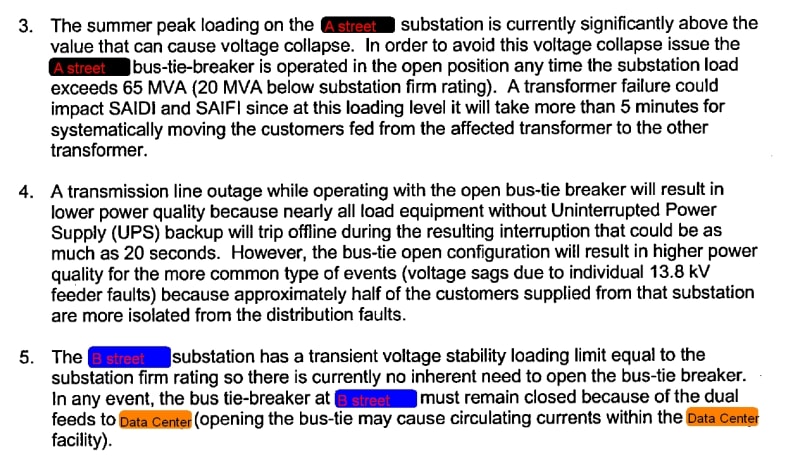The way I'm reading it, "voltage collapse" seems a bit overstated; in "my" utility we would likely choose to describe the concern as one of excessive voltage decline. Semantics? I don't think so...
The way I'm reading 3 and 4, with two sources in parallel and acceptable voltage prevailing, on loss of one source there will be excessive voltage decline to all loads supplied by the station.
If instead the station is run with the bus tie breaker open, on first contingency that portion of the load on the affected supply will simply be interrupted; and even though that's not a good thing, "no voltage is better than low voltage," as one of my senior and now retired colleagues used to say.
I find #5 fairly straightforward in saying that it's okay to split at the customer's site whenever desired, but if the station bus tie breaker is to be opened the customer's tie breaker must be opened first so the buses aren't still paralleled via the feeders, as this could cause severe problems for both the utility and its supplied customers during contingencies. Indeed in many situations where our customers have such supply tie breakers that run normally closed, opening of the bus tie breaker at the station sends transfer trip to that customer's tie breaker as well to preclude getting into that situation at all.
Hope this helps.
CR
"As iron sharpens iron, so one person sharpens another." [Proverbs 27:17, NIV]

